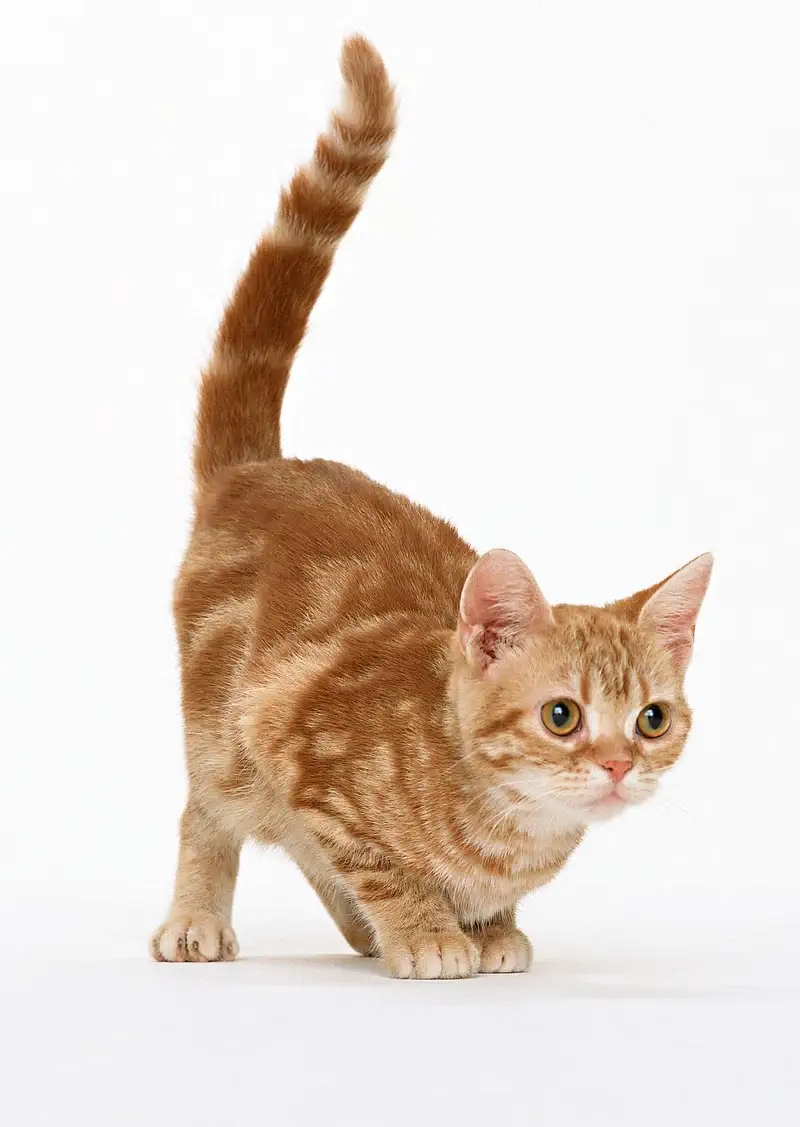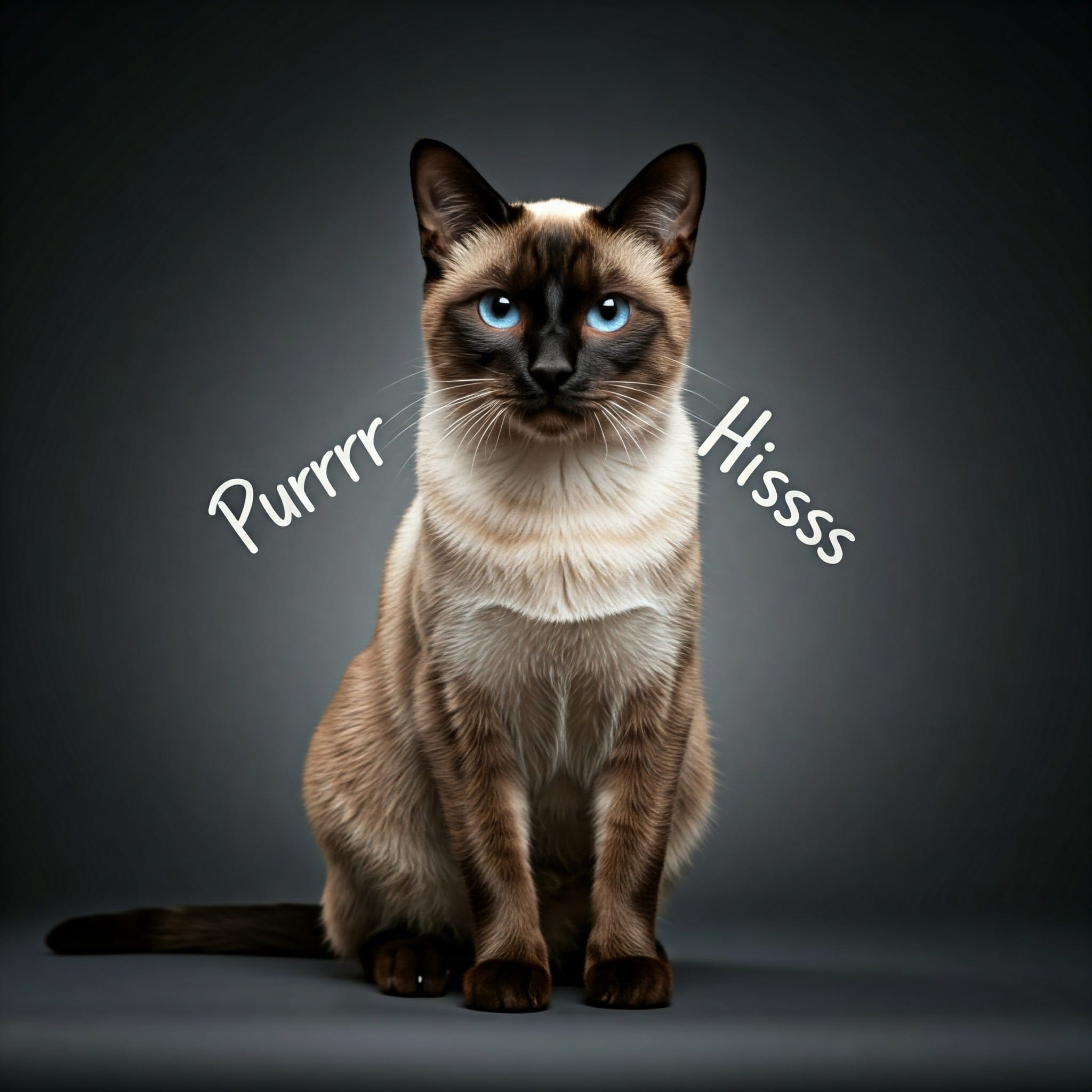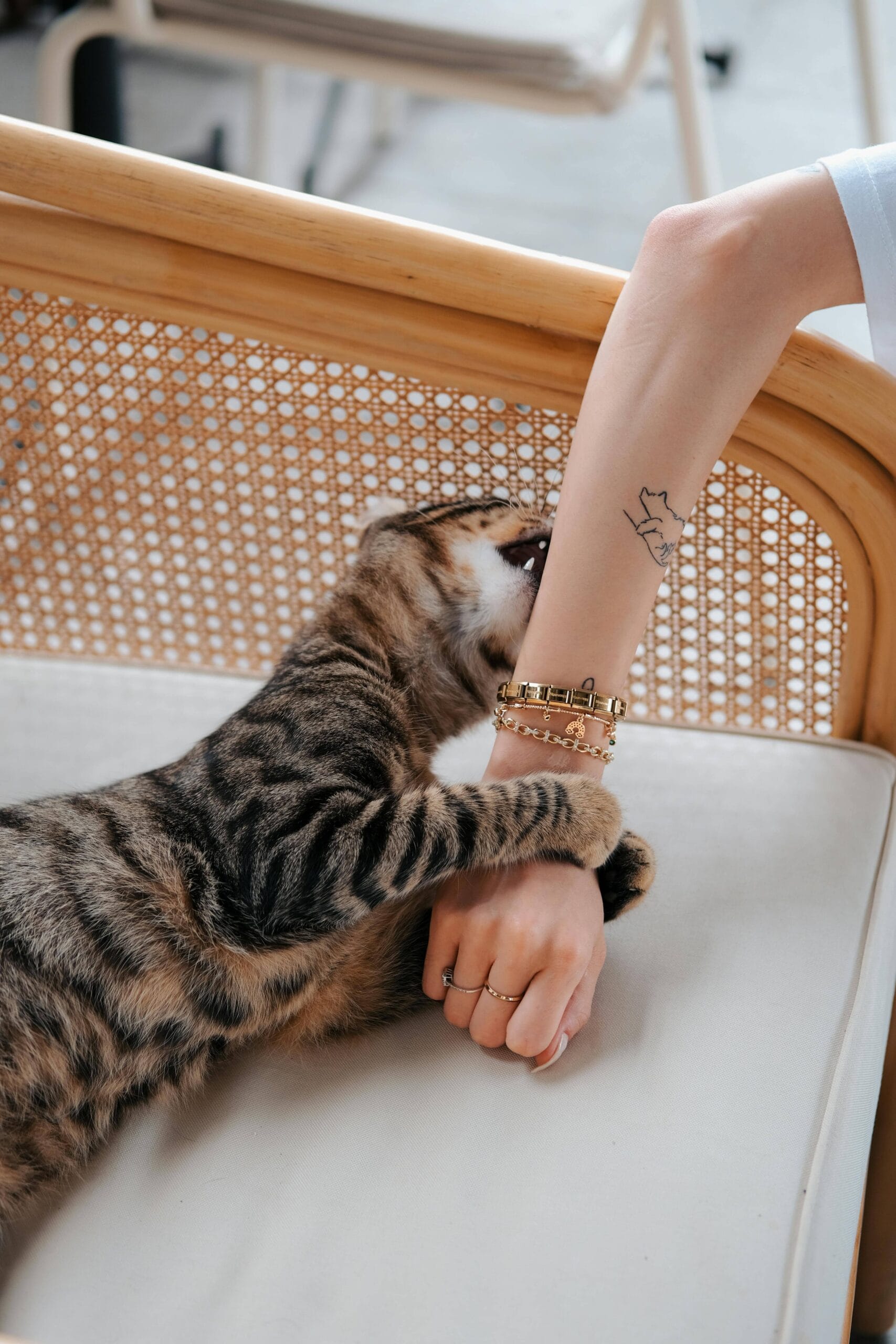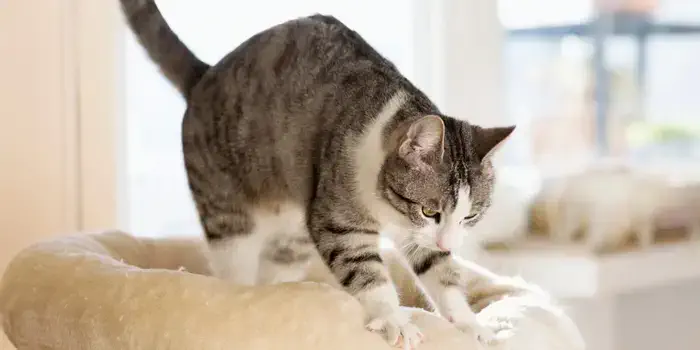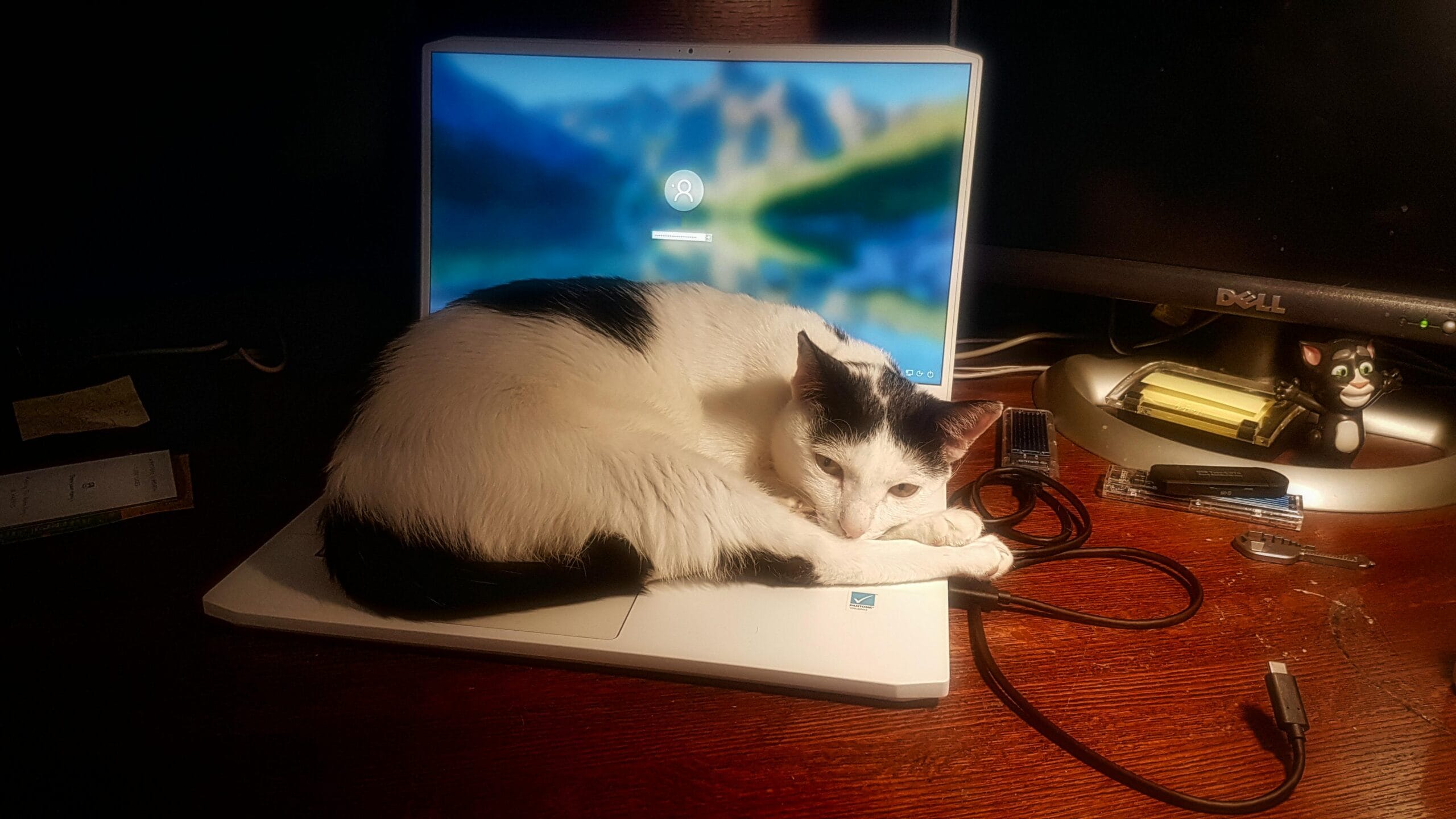
Understanding cat behaviors is essential in developing a happy and healthy relationship.
Cat Tail Language
A cat’s body language can reveal a lot about its mood and intentions. Key indicators include tail position, ear movement, and eye contact.
Tail Straight Up
This position indicates a happy and confident cat, often approaching in a friendly manner, ready for interaction or play
Tail Swishing
A rapid swish can signal agitation or aggression, while a gentle swish may indicate curiosity or focus on something interesting. Watch out for the Swishing Tail if you are patting or scratching your cat as it may be an indicator of "I've had enough for now".
Tail Hook
When a cat's tail is curved at the end, resembling a question mark, it typically shows the cat is interested and maybe cautiously curious, sometimes seen in playful or relaxed situations
Tail Thumping
This behavior often reflects irritation or annoyance; the cat may be expressing frustration with its surroundings. A warning to back off.
Tail Tucked Close
A tail tucked under the body signifies fear or submission, often indicating that the cat feels threatened or anxious. It is trying to make itself seem smaller and less noticeable.
Tail Between Legs
This position is a strong indicator of fear, suggesting the cat is feeling particularly vulnerable or scared.
Tail Low to Ground
A tail held low may reflect a calm but cautious, indicating that the cat is relaxed yet alert to its environment.
Tail Up, Fur Puffed Out
This posture indicates a frightened or agitated cat, attempting to appear larger to potential threats.
Cat Noises
Purring
Purring is one of the most common and recognizable cat behaviors. While many assume that purring always means a cat is happy, it can also indicate other things, such as self-soothing when a cat is anxious or in pain.
Meowing
Cats meow to get attention. Excessive meowing generally means they need food, water, play.
Hissing and Growling
Hissing suggests aggression due to fear.
Chattering or Chirping
You have probably heard your cat emit a fast and intense teeth chattering- especially when they spot a bird while gazing out of a window. Behaviorists speculate that this is because your cat is frustrated that they cannot get outside to hunt prey. They also may be excited and slightly aggravated.
Others say that this strange jaw movement may be your kitty’s natural instinct that allows their muscles to prepare for the act of killing prey. Either way, this behavior is completely normal for your feline.
Playful or Aggressive Behavior
Gentle Nibble
This position indicates a happy and confident cat, often approaching in a friendly manner, ready for interaction or play.
Biting with Force
A rapid swish can signal agitation or aggression, while a gentle swish may indicate curiosity or focus on something interesting
Territorial Behavior
Scratching
Scratching is a natural and necessary behavior for cats. It helps them maintain their claws, but it’s also a way to mark territory and stretch their muscles. Sometimes they just won't stop scratching your furniture. Check out the article Stop Cats Scratching Furniture for at least 5 proven techniques.
Kneading
Kneading is when a cat presses its paws alternately against a soft surface, often accompanied by purring. This behavior is rooted in kittenhood when kittens knead their mother’s belly to stimulate milk flow. Kneading also helps cats mark their territory with the scent glands located in their paws.
Headbutting or Rubbing Against You (Bunting)
When your cat gently bumps their head or rubs against you or objects, it’s called bunting. This behavior is a sign of affection and a way for cats to mark their territory with their scent.
Rolling on Back
When your cat rolls over it typically signals that the cat feels safe and maybe wants some attention from you. Your cat can also mark the area with its scent this way, claiming your space as its own.
Other Behavior
Eating Non-Food Items
Does your cat enjoy chewing on non-edible items such as wools, cloth, inedible plants, plastic, or metal? This could be a sign of a rare condition in cats called pica. Often the cause of this is unknown; however, some proposed reasons include mineral deficiencies, anemia, hyperthyroidism, genetics, boredom, and stress. Get your cat checked out by a Vet if this becomes excessive behavior.
Bringing You Gifts
Behaviorists have a few theories on why your cat is persistent in their pursuit of leaving you their kills. Even though this habit may be perceived as a gross one - your kitty is acknowledging you as a member of their group, and is sharing their hunting success with you. They could be thanking you for taking care of them, or perhaps you pay more attention to them when he generously brings you rodents, birds, or insects.
If this is a behavior you would like to curb of your outdoor cat, try putting a bell on their collar so that it is more challenging to hunt.
Staring or Slow Blinking
Slow blinking is a sign your cat feels comfortable and safe.
Butt in the Air
Does your kitty's butt go sky-high when you pet or scratch it? That's called an "elevator butt" pose and it's a good thing. Your cat's action is a backhanded compliment and kitty-correct, letting you know you've hit the spot and to continue the petting. What about when your cat puts its butt right into your face? Good news there, too. A raised tail is an invitation to another cat for a gracious butt sniff to say hello. When your cat does this to you, it's like giving a hug and kiss when greeting a friend. The good news is that you don't have to sniff your cat's hind end to reciprocate. Instead, you can pet your cat or scratch where it likes it best.
Walking on Keyboard
If it is interrupting your time on the phone, at the keyboard, or when reading, your cat is jealous of you giving attention to these objects rather than to your fur baby. The solution is to give your cat more one-on-one time as well as interactive toys to keep it stimulated.
Sitting in Boxes
Cats, much like little kids, often prefer to play with the box a gift came in over the toy itself. Put even the tiniest empty box on the floor and your furry pudge muffin will try to squeeze itself into it. Your cat's passion for boxes is a natural instinct. Felines are hunters and love to hide in small spaces before surprising their prey, making a box the perfect hideout. The texture of a box, often cool and smooth, can also feel good to a cat. Just make sure the box is safe to play in, minus staples or packing peanuts that can tempt a cat to chew.
Knocking Things Over
Cats love to knock things over—and watch them break. Though not the most endearing behavior, it's probably your pet's way of telling you it's bored, needs attention, and wants to play. As you probably already know, scolding your cat won't help to eliminate this problem. To minimize this frustrating behavior, it helps to enrich your cat's day with more interactive toys and puzzle feeding dishes to make your kitty work for its kibble.
Drinking from Taps
Cats aren't always big fans of drinking water unless it's out of a faucet. It's suspected that cats avoid motionless water sitting in a bowl because it appears to be unhealthy. Instead, running water is perceived by cats to be fresher water which is why the bath or kitchen faucet is such a big draw. If you want to keep your kitty out of the sink, try a cat water fountain or encourage hydration with a special bowl. But if your cat loves to sleep in a sink (it's snug and cool and often shaped like a cat bed) while sipping dripping water from the faucet, it may be a tough habit for your pet to break.
Running Around the House
The midnight crazies, otherwise known as cat zoomies, are a typical behavior that rarely needs attention. Your kitty may race across your home like it's being chased, literally bounce off the walls, and meow like it's yelping. Most likely, it's just entertaining behavior for your cat's enjoyment. Remember, your cat is a natural hunter and without the need to hunt down its prey, your pet has a lot of pent-up energy. Sometimes, though, your cat is acting wild to help itself feel better from a case of fleas or if your cat is old, perhaps it's a bit senile and reliving its kittenhood. Watch your cat during this behavior and if you see any physical evidence of bothersome bugs or other problems, call the vet for a visit.
Licking You
Even if your face stings a bit from your cat's sandpaper-like tongue licking you, know that you're enduring the discomfort in the name of love. Any time a cat licks you, it's a gesture of affection. Your cat is also letting you know it owns you. About that rough tongue? It's normal—your cat's tongue is the ultimate cleaning machine, designed with backward-facing hooks meant to grab its fur for grooming. Beware that a cuddly licking session may end up with your cat gently biting your chin, but don't worry, it may be telling you it's time to stop.

